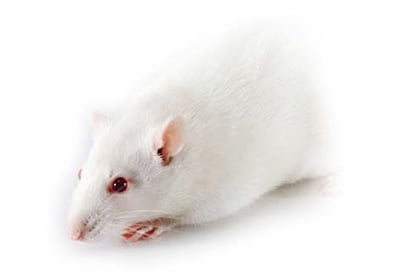Leptin knockout rats
HsdSage:SD-Lepem1Sage

Strain
Location
Order Today
Typically heterozygous rats are cryo-recovered in 10-12 weeks to an age of 7 weeks old. Subsequently homozygous rats to an age of 7 weeks old can be produced within 20-22 weeks.
- This model possesses a 151 bp deletion within Exon 1 on chromosome 4
- Homozygous knockout rats display loss of Leptin protein via Western blot
- Homozygous knockout rats demonstrate significant weight gain compared to wild type littermates
- Homozygous knockout rats demonstrate insulin resistance
- Homozygous knockout rats show greatly elevated serum cholesterol levels
- Background Strain:Sprague-Dawley
Availability: Cryopreserved as heterozygous embryos
Zygosity: Heterozygous as live colony
Leptin is essential for energy intake and expenditure. It is one of the most important adipose-derived hormones, being primarily expressed in adipocytes of white adipose tissue. Loss of function of Leptin creates an uncontrolled appetite leading to severe obesity and abnormal metabolism, making this a useful model for the study of lifestyle diseases, such as obesity, diabetes, atherosclerosis, high cholesterol and high blood pressure.
Origin:
The Leptin Knockout Rat - model was originally created at SAGE Labs, Inc. in St. Louis, MO and distributed out of the Boyertown, PA facility. The line continues to be maintained through the original SAGE Labs animal inventory acquired by Envigo, then Envigo was acquired by Inotiv in 2021.

Available regions:
For pricing information, please contact us using the phone number above.

Research use and related publications
- Cardiovascular
- Artery disease
- Atherogenesis
- Atherosclerosis
- Diabetes
- HypertensionInsulin resistance
- Lipoprotein/Cholesterol transportation
- Metabolism (Triglyceride/Cholesterol)
- Obesity
- Type II diabetes





